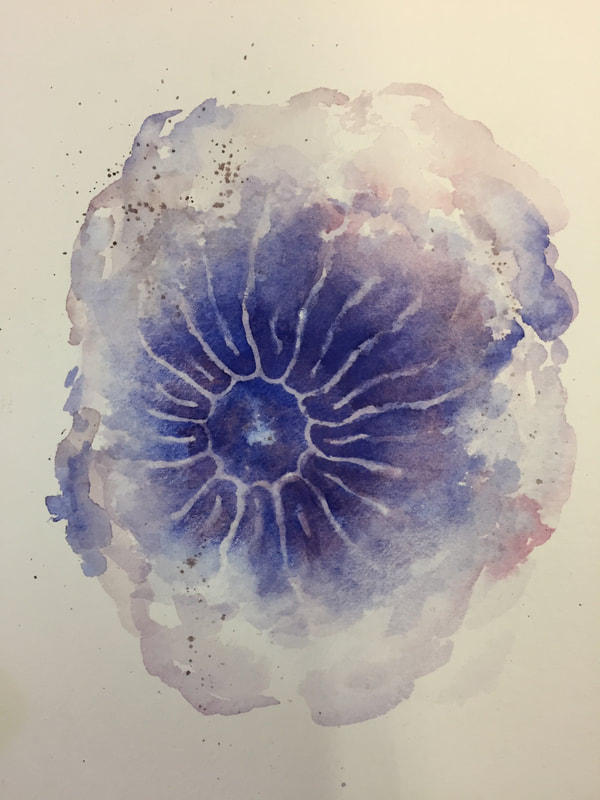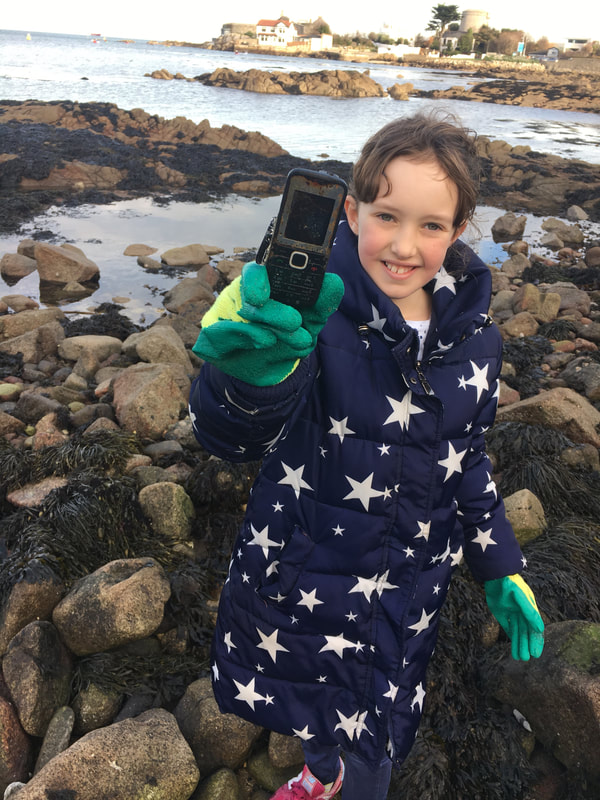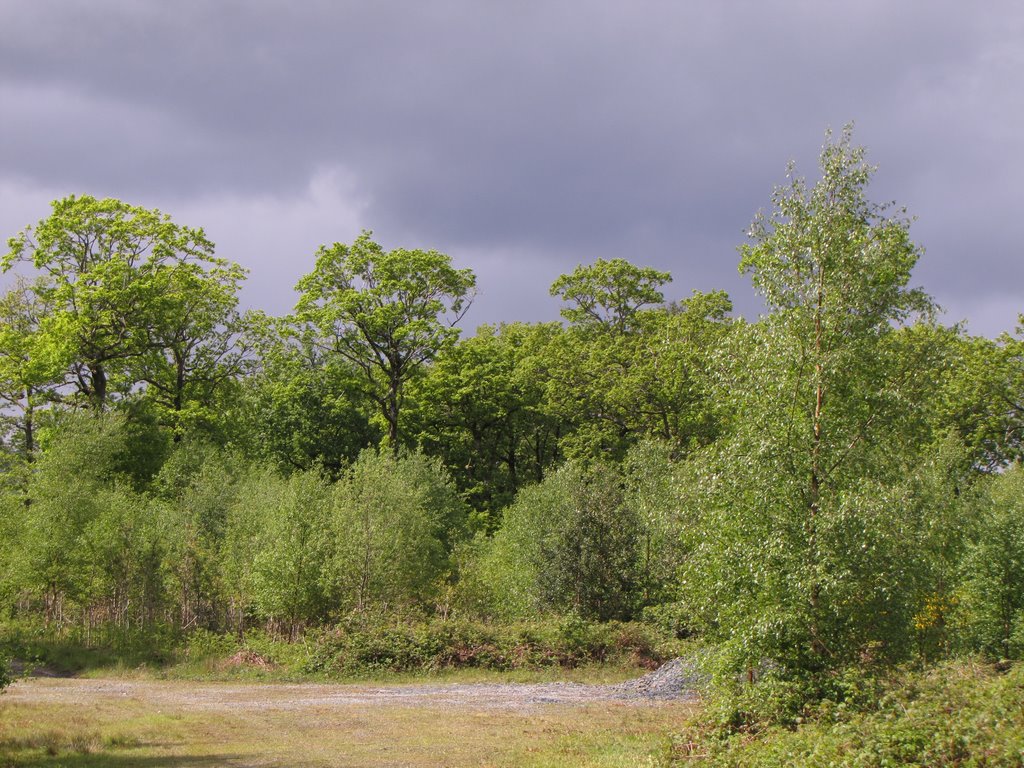|
Left: rhododendron, an exotic shrub which threatens the very survival of Killarney's oak forests, is burned for charcoal in Post Colony, a complex artwork exploring history and culture in environmental issues by Gareth Kennedy. Photo: Brian Cregan. Right: one of Eoin Mac Loclainn's bluefire jellyfish paintings at Dublin's Olivier Cornet Gallery, in a group show inviting artists to respond to climate change; these jellyfish are turning up on Irish beaches increasingly regularly as the sea warms, and may displace native species. My most recent environmental article in The Irish Times:
You might easily think that the names of the two template image shapes on smartphone cameras – portrait and landscape – were coined for the digital era, though they were already familiar to anyone who worked in publishing before the micro-chip changed everything. And indeed, these twin concepts of portrait and landscape reflect two fundamental categories of visual art. You could even say they go right back to the moment our species developed art in the first place. Early cave art, in Europe at least, mostly featured animals, often arranged as if in a landscape. Cave artists also proclaimed individual human identity, through hand prints that we might consider the first portraits. And as art developed, most cultures maintained this dual focus, on portraits of people, and portrayals of landscapes. And often of both at once, with varying relationships between the two. In The Harvesters, Dutch painter Bruegel the Elder celebrates the human labour that transforms a diverse natural landscape into highly productive if monotonous wheat fields. Henry Raeburn’s Sir John and Lady Clerk, which hangs in the National Gallery on Merrion Square, exudes the pride of individual ownership of vast tracts of parkland, where nature has been tamed for safe recreation. In our own times, artists have been trying for decades to engage in new ways with our heightening awareness of rapid and potentially catastrophic environmental change, generated by our own actions. And this unprecedented crisis requires us to think about the interaction between humans and the environment – between portrait and landscape, if you like – in radical new ways. This article first appeared on Saturday March 17. You can read the whole article here
0 Comments
Kim Eierman's excellent EcoBeneficial! enterprise prompts gardeners to think about new ways of looking at the relationships between what they plant, how they plant and how they treat their land to wider environment issues. She kindly asked me to do an interview for her very lively blog, after my presentation on invasive alien plants at New York Botanical Garden in November (see below). The interview covers a range of conservation issues -- ecological restoration, the challenge of climate change, my critique of the very problematic 'novel' ecosystems approach. Kim liked it enough -- or perhaps I was just so garrulous! -- that she split it into two parts. The first part I published here last week, see below. You can listen to the second part here.
A rainy day in Stoneybatter, enjoyed by juvenile herring gulls: probably raised locally, the birds take advantage of temporary pools on a flat roof to bathe and preen, just a couple of metres from my bathroom, in this video There is not a blade of grass, nor a square inch of soil, let alone a tree, on the street where I live in Dublin’s Stoneybatter. Our sturdy redbrick terraces open directly on to concrete pavements, and the small back yards are also concrete. The natural world was not high on the agenda of the Victorians who created such housing projects for the skilled working classes. Gardens and tree-lined streets were a luxury, reserved for the new middle-class suburbs.
Nevertheless, nature has found footholds here, though I didn’t notice some of them for a long time. You tend to see only what you already know about. I had long been interested in birds, so I watched herring gulls beginning to nest on our rooftops. I heard the robin that sometimes seemed to sing right through the night from a patch of garden lovingly created by a neighbour on nearby “waste” land. Only when I became interested in plants about 15 years ago did I start to notice the diversity of species exploiting tiny niches on the street. This article appeared in The Irish Times on 20 January, 2018. Read the whole piece here Worth looking for: a family of long-tailed tits in our garden in Glenmalure Very few people are entirely indifferent to birds, and most of us find them an occasional source of some brief wonder and delight.
Even the most common birds can surprise us with their beauty, when the light suddenly catches the tail of a magpie or the breast of a starling, and reveals an unexpected prism of iridescent colours. Part of the fascination lies in the fact that they are so familiar on our earthbound world, and yet are also so completely at home on the water, and in the skies. Their ability to take wing has inspired the imagination of all human cultures; the sudden rush upwards of a flock of birds from our feet can still make us catch our breath. Rural people have always known that birds are as finely tuned to the turning seasons as the leaves on trees. Even today, many city-dwellers find joy in seeing the first swallow of the year, and sense a deeper connection with the rhythms of the world when a flock of geese first plummets down to their local sports ground in autumn. But what is needed if you would like to deepen these mild pleasures and learn a little more about the birds in your area? The good news is that birdwatching is a much more accessible recreation than you might expect. This article appeared in The Irish Times on 30 Jan 2017. Read the whole piece here Five regular hikers, Olivia O'Leary, Liam Lysaght, Sinéad O'Brian, Mark Boyden and David Staunton -- share the joys, and pains, of their favourite riverside walking routes We have been drawn to rivers since long before the dawn of history. We were attracted to watercourses for their obvious and essential gifts of food and rapid transport, which made them favoured sites for settlements. But perhaps we were also drawn to them for many less tangible but still vital benefits, so that we continue to delight in walking alongside, or kayaking within, their flowing waters today. Ireland’s exceptional river wealth is rightly celebrated, from the feisty mountain trout streams that inspired WB Yeats’s “wise and simple” fisherman, to the majesty of the Liffey, reflecting the lives of myriad Dubliners in the work of James Joyce. Our rivers often retain fragments of natural beauty lost in surrounding agricultural and urban intensification. Yet they are also inevitable conduits for the detritus of the catchments they drain, barometers of the health or sickness of our landscapes. So a riverside walk can be a source of both pleasure and pain to the observant walker or kayaker, as is evident from these reflections by five people who spend a lot of time down by the river. This article first appeared in The Irish Times on 9 December 2017. Read the full piece here. When asked why he wanted to climb Everest, George Mallory reportedly replied: “Because it’s there”.
Asked why she has taken on the almost equally daunting challenge of clearing the rubbish from her local beaches, and from the sea beyond them, 10-year-old Flossie Donnelly takes a similar approach: “I go crabbing in rock pools in Sandycove with my mummy and we see rubbish and we pick it up. I go swimming and see rubbish in the sea, so I dive and take it out.” She first became aware of rubbish in the sea when kayaking in Thailand. “It’s a beautiful country, but there is an awful lot of plastic in the water. We filled a whole kayak with rubbish on our first day out. I hate to see the same thing building up in Ireland, so I want to help stop it.” This article appeared in The Irish Times on 4 December, 2017. Read full version here. I gave the keynote address on alien invasive plant management at the very well attended Lower Hudson PRISM Summit on 3 November. You can see a video of the presentation, and the whole summit, here.
In summary, I argued that the poorly conceived 'novel ecosystem' theory has led to the popular notion that 'invasive plants will save nature' (Fred Pearce). This is scientifically false and undermines sound conservation policy; but I also argued that 'removal alone is not enough' , that ecological restoration is the best way to cope with the challenge, and that the new International Standards published by SER provide the best restoration guidance currently available. A native oak woodland in process of restoration -- Ballygannon People's Millennium Forest, Avonmore Valley, Co Wicklow. Photo: Paddy Woodworth “Forest” may be a rather overblown word for most of our woodlands. Ireland has the sad distinction of being the least forested state in the EU, with only 10 per cent woodland cover. Only one tenth of that lies under diverse native broadleaf trees; the rest is monocultural conifer plantation.
Caoine Cill Cháis, with its haunting lines evoking lost “hazel, holly and berry”, is still sometimes quoted to blame our colonisers as the sole culprits for deforestation. But we have been clearing trees since the Stone Age; and we were still destroying priceless remnants of ancient forests decades after independence. Happily, public opinion today has a much greater appreciation of the ecological, health and social benefits of native woodlands, and the rich pleasures of walking under varied and seasonally changing woodland canopies. This article appeared in The Irish Times on 11 November, 2017. Read it here. It’s natural to think of winter in Ireland as the season when nature pulls down the blinds. Light fades, leaves fall, vegetation withers and swallows fly south. Natural, but quite wrong for birds. This is the time of maximum abundance for waterfowl – swans, geese and ducks – and spectacular wading birds like curlew and sandpipers.
And these species are remarkably easy to see at almost any estuary, often very near our cities. You can see both wildfowl and waders in very large numbers at the North Bull Island in Dublin, for example, and from half a dozen sites in the Cork Harbour area. Winter is also the time when some of our largest and most dramatic birds of prey roost together in quite large numbers, sometimes with elaborate pre-roosting flight displays, or are more easily spotted while hunting than in the summer. This article appeared in The Irish Times on 10 October, 2017. Access full article and images here. The relationship between industrial production and the environment has very rarely been a happy one. So it comes as an agreeable surprise to find that an international manufacturing company, Intel Ireland, seems to have an active interest in protecting, and even restoring, biodiversity not only on its own site, but in the nearby communities of Leixlip, Celbridge and Maynooth, and even further afield. “We would love to create a situation in which every employee becomes an advocate for biodiversity,” says Mark Rutherford, the company’s environmental health and safety manager. This does sound too good to be true. How authentic is this commitment? How much of it is simply the familiar PR effort to put a new green sheen on the same old degrading and destructive industrial practices? This article appeared in The Irish Times on 14 October, 2017. For full text, click link below |
Articles & BlogArticles on the environment; Spanish, Catalan and Basque politics; travel; culture; and other subjects; interspersed with personal reflections and images Archives
October 2022
Categories
All
|









 RSS Feed
RSS Feed